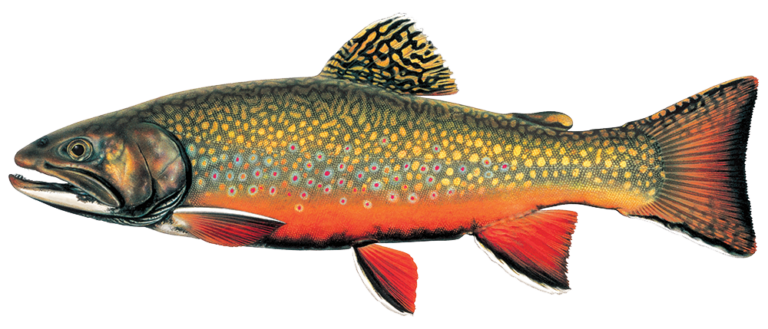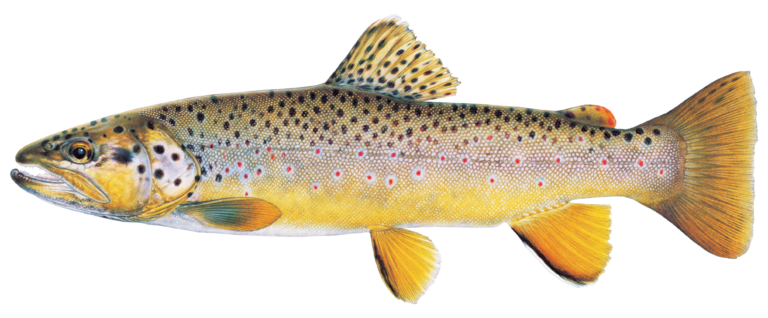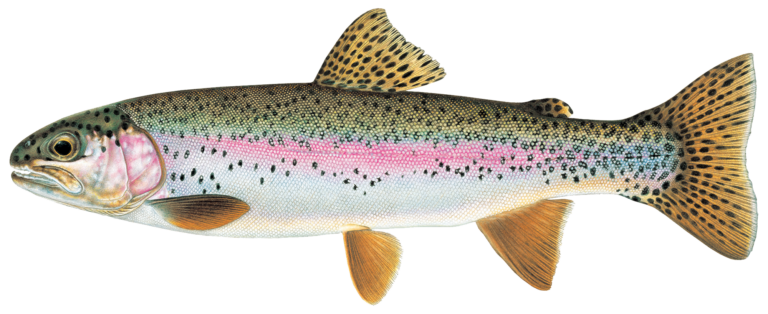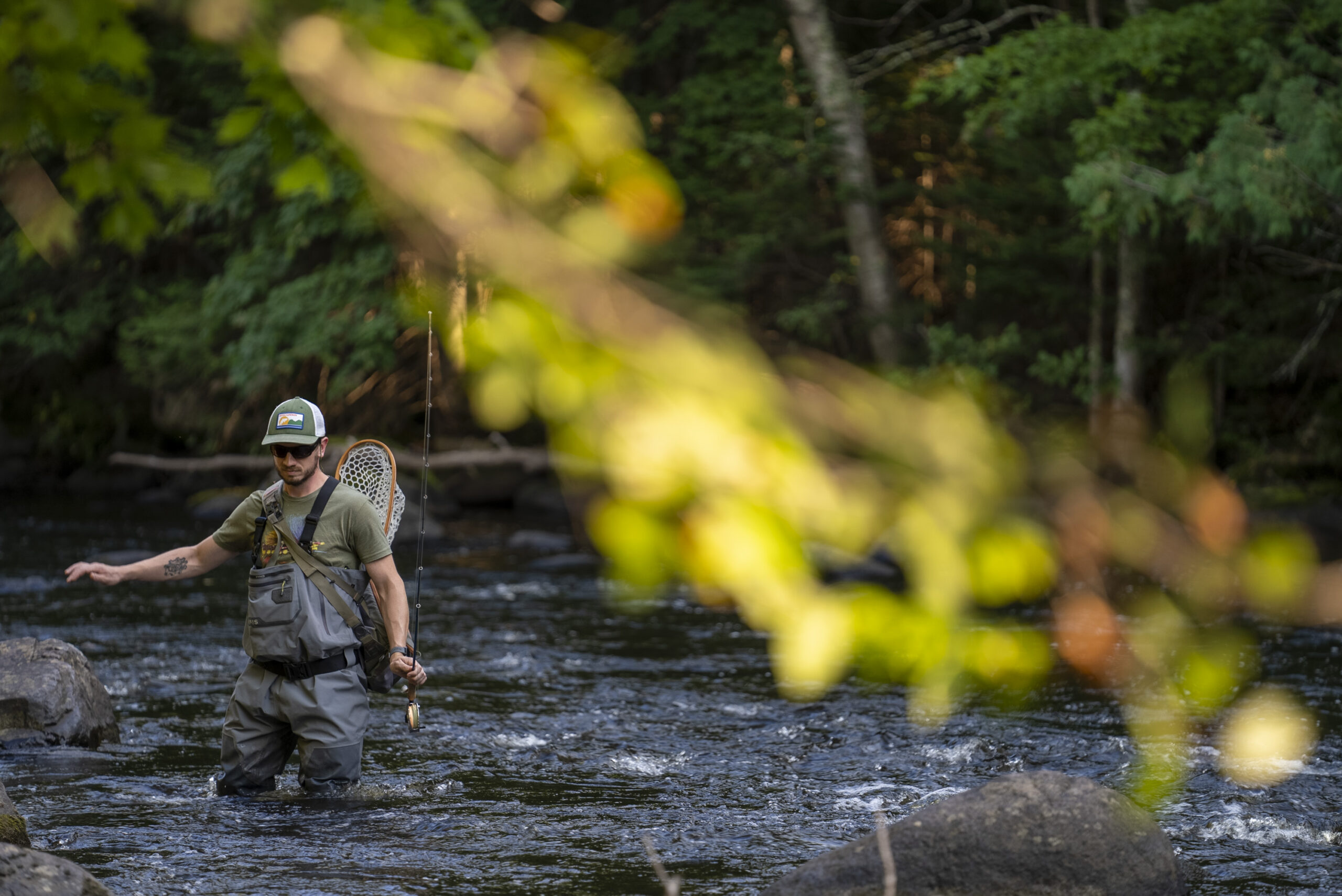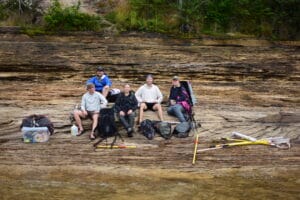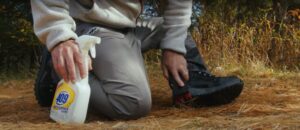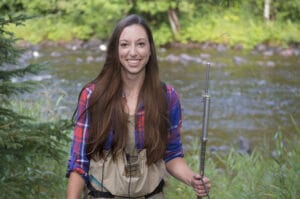Wisconsin

Overview
Wisconsin’s unique cold waters are climate strongholds for native brook trout and wild brown and rainbow trout. Tributaries to Lake Superior harbor native coaster brook trout. The headwaters of larger “coolwater” rivers provide refuge for stream-resident brook trout in the Green Bay watershed. The spring-fed trout streams of Central Wisconsin and the world-class trout waters of the Driftless Area are destinations for anglers. Trout Unlimited is working with a broad and diverse coalition of agency, tribal, local government, nonprofit, and community partners to protect and restore these waters. Through joint priority-setting, robust monitoring and surveying, and the roll-up-your-sleeves work removing dams and replacing culverts to reconnect rivers and restore riparian floodplains, TU is working to restore the immense potential of Wisconsin’s trout waters.
Threats & Opportunities
Wisconsin’s iconic trout streams can be a climate stronghold for native brook trout and wild brown and rainbow trout, but historic and present land use practices impede their potential as climate change threatens to warm them in the coming decades. Trout Unlimited’s work in the region removes failing dams, replaces road-stream crossing barriers, and restores riparian floodplains and cool rivers, and reduces flooding risks.
How We Work
Reconnection
Thanks to federal infrastructure investments, TU and partners are removing dams and replacing road-stream crossings to open miles of coldwater habitat for native brook and wild brown and rainbow trout throughout Wisconsin, as well as cooling large sections of rivers even more than climate change is predicted to warm them.
Restoration
Native tree plantings, riparian zones, and floodplain restoration are providing a climate refuge for trout in Wisconsin’s cold waters.
Collaboration
Working with federal, state, and local agencies, and tribal, university, local government, and nonprofit partners, TU is building communities invested in trout and salmon restoration.
Temperature Monitoring
By identifying places where groundwater influences keep streams cold, we focus our work in sections of rivers where trout populations will survive warming temperatures.
Keep Exploring
How You Can Help
Volunteer to help us keep Wisconsin’s streams healthy and cold.
TAKE ACTIONStay up to date on our work in Wisconsin.
Wisconsin Conservation Team

Chris Collier
Great Lakes Stream Restoration Manager
chris.collier@tu.org
Great Lakes Stream Restoration Manager
chris.collier@tu.org
Priority Waters

-
Green Bay Headwaters
Located in northeastern Wisconsin’s Lake Michigan drainage, this Priority Water consists of four watersheds: the Oconto, Peshtigo, Brule, and Menominee rivers. This area contains vast networks of state-classified trout streams. While the mainstems are often defined as marginal coldwater to warmwater systems, the headwaters to these rivers provide high-quality coldwater habitat for native brook and wild brown trout. These streams provide complex networks of habitats that provide a matrix of habitats for growth, feeding, spawning, and thermal refuge.
-
Wisconsin Wild Rivers
In northwestern Wisconsin’s Lake Superior drainage, this Priority Water includes the Bois Brule, White, Marengo, and Bad rivers and their tributaries. While these iconic and productive coldwater systems appear to be well situated today and into the future, there are significant threats from climate change, habitat fragmentation, and hydrologic modification tied to land use changes. Increasing TU’s investment in these watersheds will move the needle, helping us to reconnect and protect these waters while serving as a conservation model for the broader Lake Superior basin.
-
Wisconsin Central Sands
The Saint Lawrence River Divide takes a winding path through Wisconsin. This continental divide courses North to South through the Central Sands region of Wisconsin, with Upper Fox and Wolf River waters to the East draining into Lake Michigan and the Castle Rock waters draining west to the Mississippi River. Headwater streams on both sides of the divide have naturally reproducing, wild populations of brook and brown trout. Many of these streams are on public land and are part of state fishery areas, demonstrating Wisconsin’s commitment to clean, cold water in the region.
-
Lake Superior Tributaries
Lake Superior’s south shore is home to a high concentration of trout streams that support stream resident native and wild trout and the unique life history of Great Lakes resident trout and salmon that use the tributaries for spawning, including native coaster brook trout. These tributaries provide high-quality habitat for stream resident and lake-run species and are expected to be resilient to climate change. Protecting, reconnecting, and restoring these high-quality streams secures climate-resilient habitat so future generations can experience the trout and salmon that call Lake Superior’s south shore home.
-
Driftless
The unique, 24,000-square-mile, unglaciated Driftless Area in the heart of the Upper Mississippi River basin is a natural resource treasure. The scenic landscape, with its steep hills and rocky bluffs, is home to one of the country’s most remarkable freshwater resources — more than 600 coldwater limestone spring-fed creeks supporting a world-class trout fishery. Over 5,700 miles of mineral-rich spring creeks weave across the landscape. These streams support abundant populations of trout, which in turn, attract tens of thousands of anglers to the region each year.

